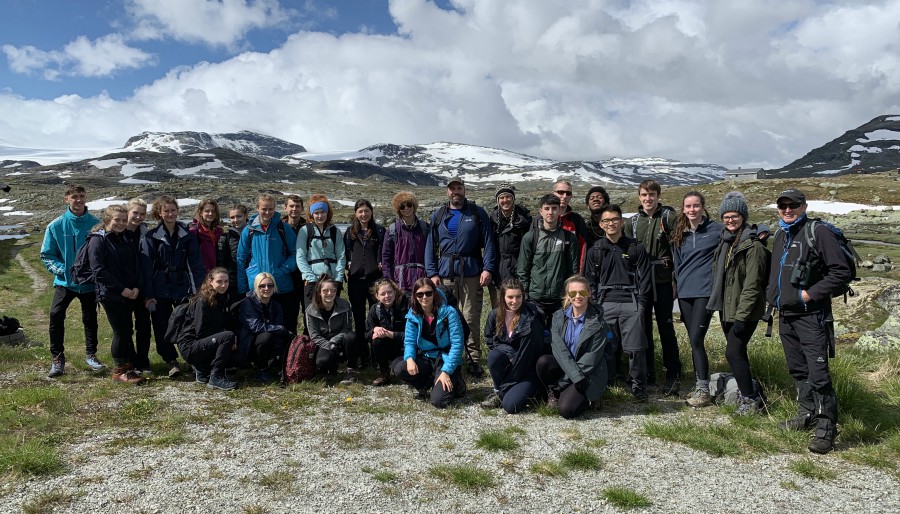
Ecology students at the University of Birmingham have been witnessing climate change at first hand during a field trip to Finse, in Norway.
The team of second year students travelled to the region, near Bergen, to explore the ecology of the area, and pick up new skills for their undergraduate studies.
Accompanying the group for the first time this year, was a biology teacher from the University of Birmingham School, who joined the trip to find out more about how the ecology is taught at undergraduate level with a view to improving the transition for students between A level and university.
Staying in a field station near Lake Finsevatnet, exactly 1222m above sea level, the group have been learning about the wildlife in the area through a variety of techniques such as quadrat sampling for plants and pitfall trapping for invertebrates, as well as using camera traps and drones. They are investigating a range of local environments including the ecology within meters of the snout of a glacier.
Professor Jeremy Pritchard and Dr Scott Hayward, from the School of Biosciences at the University of Birmingham, led the expedition. Professor Pritchard says: “Trips like this one are vital for inspiring students to gain the skills they need to tackle climate change challenges. Other skills, such as team and project management will also give them a great start in any career after they’ve finished their studies.
“This trip is also particularly important as it is giving us a chance to engage with how these topics are taught at A level through our links with the University of Birmingham School. It’s clear there are huge benefits to engaging with the learning environment at A level so that our universities can better support and learn from schools – and vice versa.”
For further information please contact Beck Lockwood, Press Office, University of Birmingham, tel 0121 414 2772.
The University of Birmingham is ranked amongst the world’s top 100 institutions. Its work brings people from across the world to Birmingham, including researchers, teachers and more than 6,500 international students from over 150 countries.